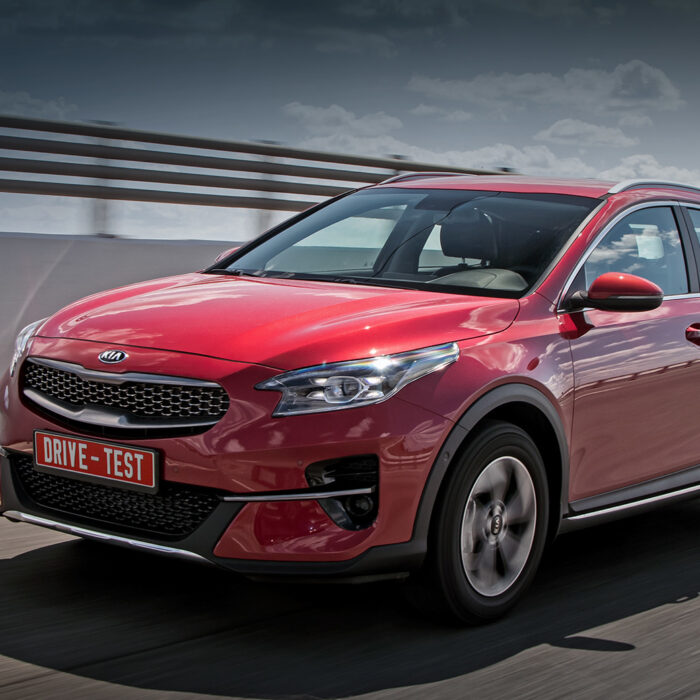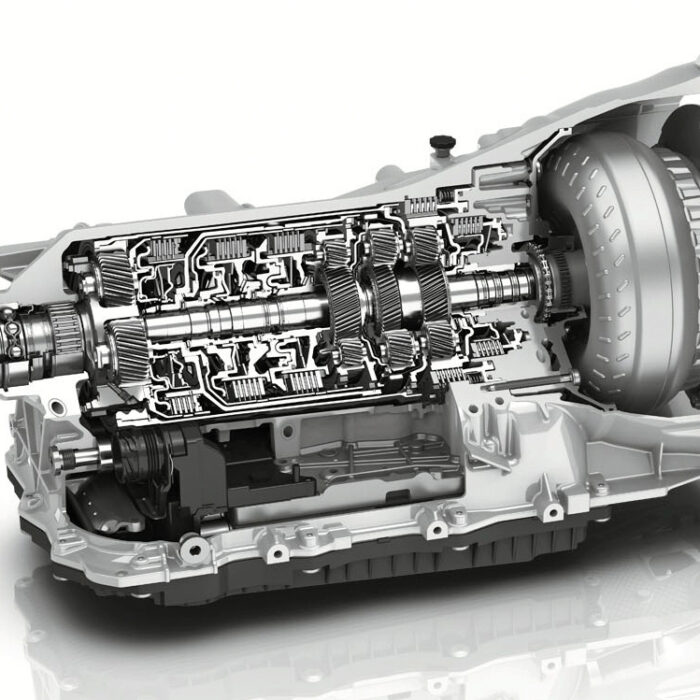2021, another premium sub-brand of Geely named Zeekr 001 unveils its electric vehicle built on this platform. Its mission is to establish its place in the top league and compete with pedigreed electric vehicles such as the Mercedes-Benz EQE but whether the chances are awfully good?
Remember when the crossover boom started about twenty years ago, every second Auto Review test started with a phrase – like, this manufacturer has slept through everything, others are already churning out elevated pseudo-off-roaders, and it’s only just introducing an SUV to the market? This is exactly what comes to mind about Mercedes. After all, not only the company named after a Serbian visionary but also a dozen Chinese firms have already done what Mercedes had just been talking about. Their electric program was launched in Stuttgart seven years ago – and it was planned that by 2022, Mercedes-Benz would be releasing ten electric models, all based on a separate modular platform.
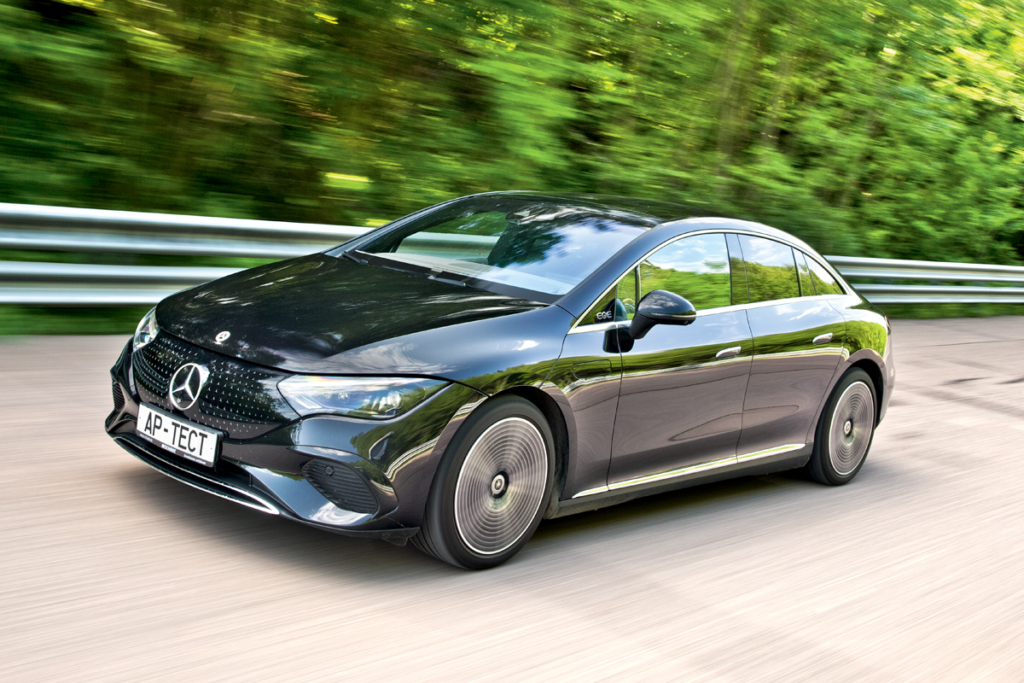
As of today, there are only four such models. And if you don’t have a tape measure with you, you could even say there are two, because the EQS and EQE from Mercedes look the same, with the exception of dimensions. And they really are built on the latest Modular Electrical Architecture platform. Thus, we have a three-letter battle today – MEA versus SEA.
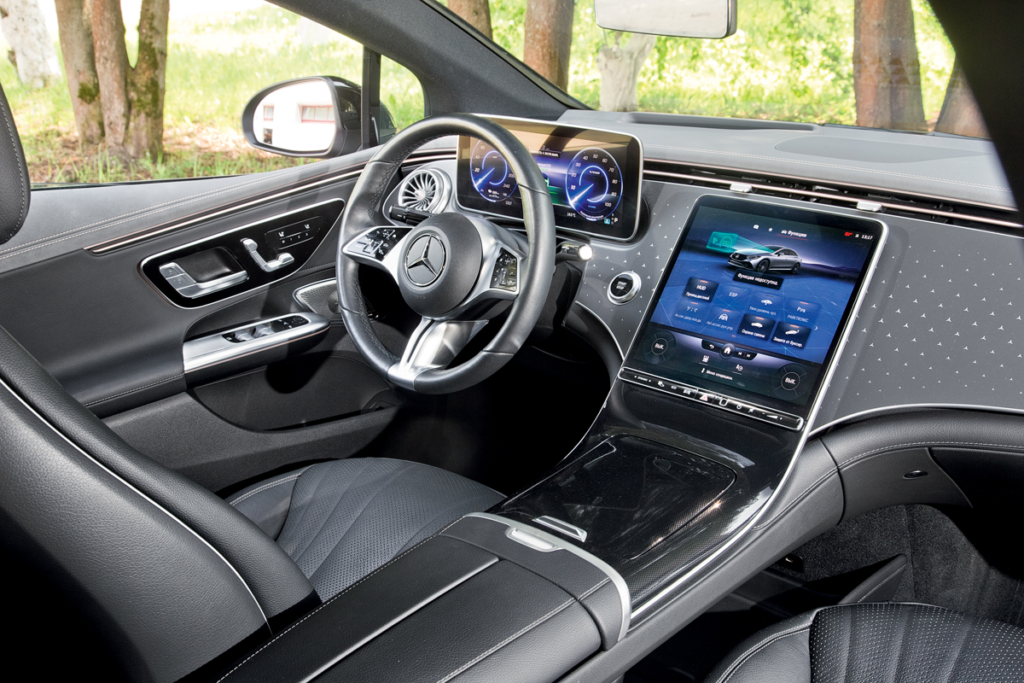
The plastic panel instead of the front panel looks so-so. For a surcharge it can be completely covered
with Hyperscreen.
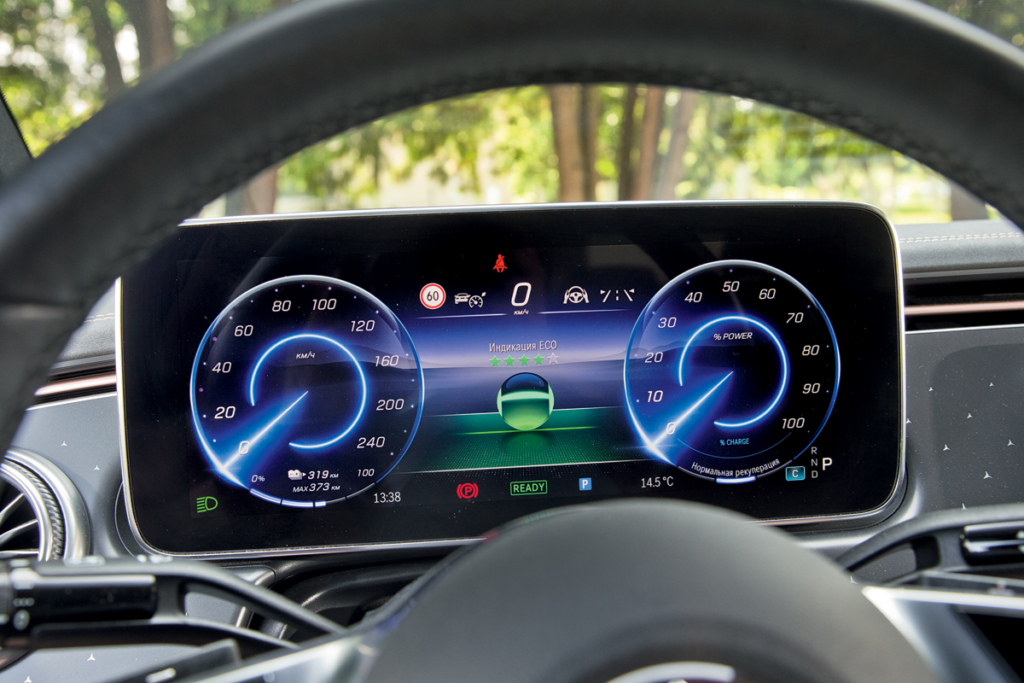
Albeit digital, but still a classic. There are no problems with readability, you can choose a different design option, but in any case it will be more convenient than in Zeekr.
The rest of the electric Mercedes are based on traditional gasoline models, and the new wave of electric Smarts are even built in collaboration with Geely on the SEA platform. Talk about a twist of fate!
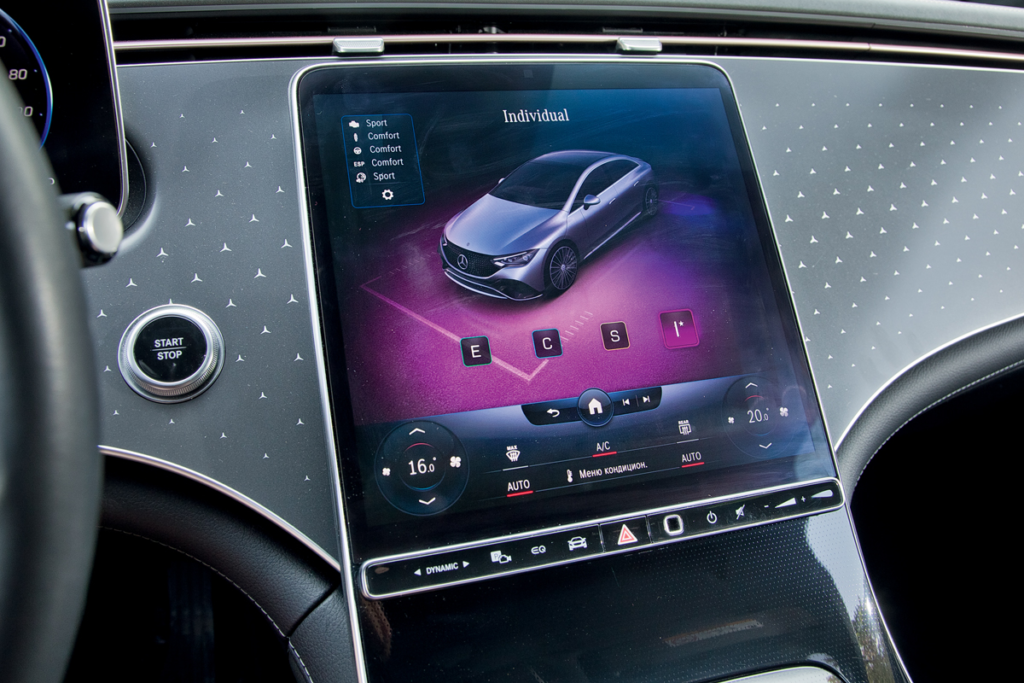
When it comes to design, it can be said that today’s battle is happening on the sea bed. After all, Mercedes is clearly mimicking a deep-sea dweller. Where there’s never any sunlight and where no one will ever see you, that’s typically where such beauties live. Not a single golden rule of car design has been adhered to! The continuation of the front pillar “hits” the bumper’s corner when it should pass through its center, and the gap in the huge three-meter wheelbase can fit almost four and a half wheel diameters instead of the commonly accepted four. Strange connectors between the hood and wing, a lengthy side surface that required inserts because the doors couldn’t be stretched any more. However, it boasts an admirable drag coefficient of 0.22!
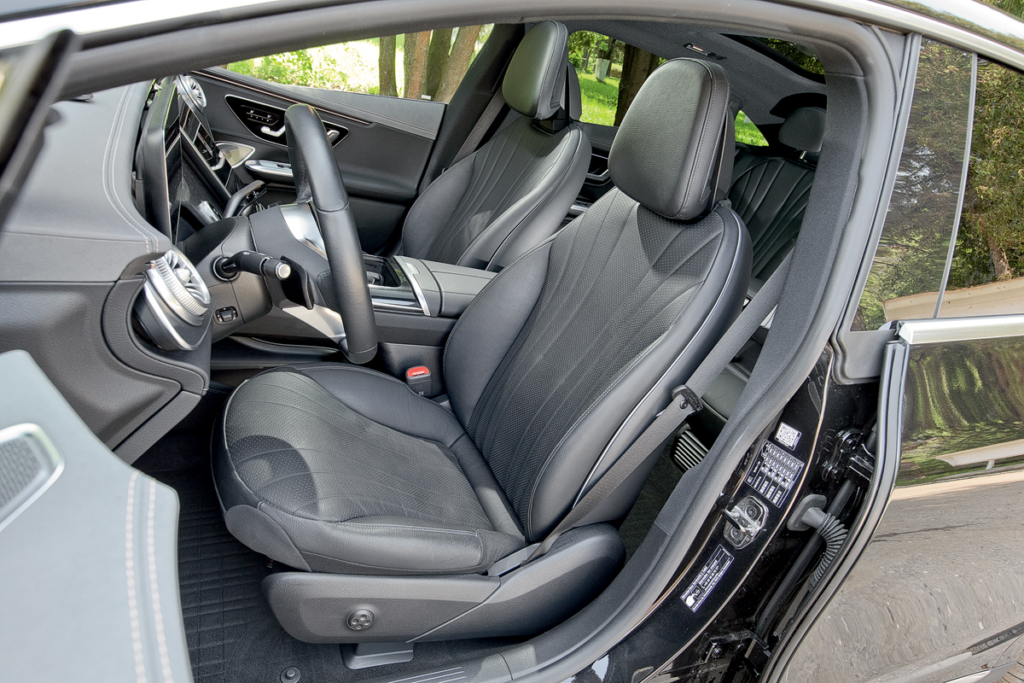
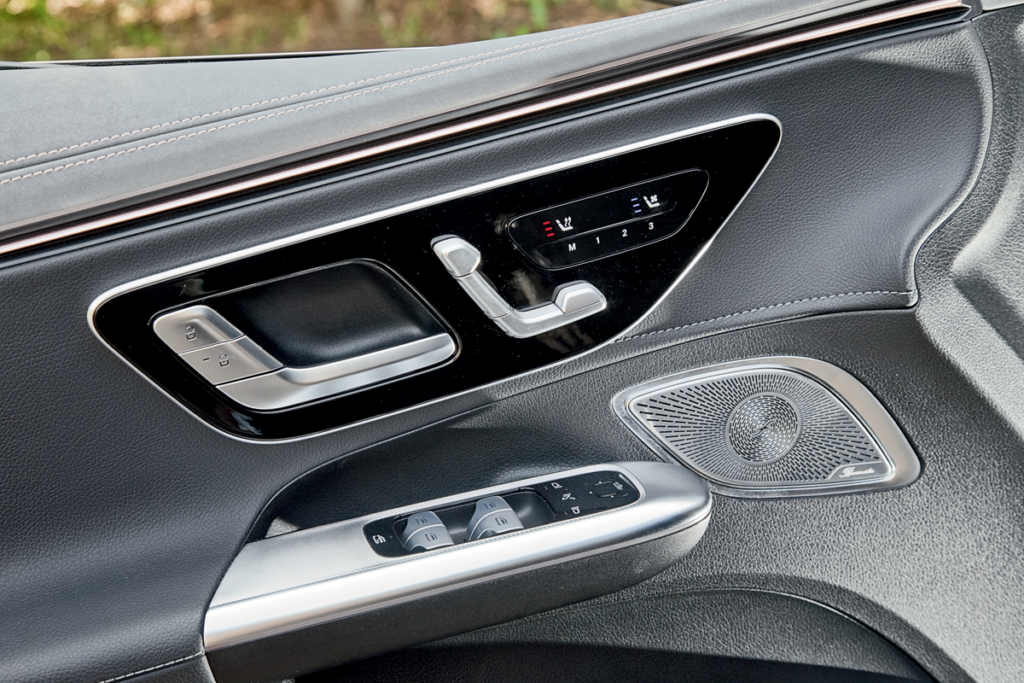
But as Enzo Ferrari once said, aerodynamics are for those who can’t build engines. Lo and behold, Zeekr doesn’t attempt to be the most efficient, but its two electric motors deliver a combined output of 544 hp. Both cars are equipped with batteries of the same 100 kWh capacity, but for Mercedes, they are made by LG, and for Zeekr, by CATL. Moreover, Zeekr has recently introduced a version with a whopping 140-kWh battery. These liftbacks only come in rear-wheel drive, and the range according to the Chinese CLTC cycle (analogous to NEDC) exceeds a thousand kilometers! However, from numerous tests of Chinese electric vehicles, we’ve already realized that in real life, one can confidently subtract a third, if not half, from the passport values. Even then, it’s still impressive.


The EQE offers separate climate control for the second row as well.
Our Zeekr, with an average summer consumption of about 22 kWh/100 km, has a real range of slightly over 400 kilometers. Quite enough! But against the backdrop of the Mercedes, which arrived at the Dmitrovsky proving ground under its own steam from Tambov (about 530 km), it no longer impresses. Under regular driving, the EQE gives you the opportunity to cover 500 kilometers on a single charge, and with a bit of economizing, you can stretch the pleasure to almost six hundred. The owner of this Mercedes, Alexey, is an active long-distance electric car enthusiast. And he started doing this well before he bought the EQE. I was particularly impressed by Alexey’s story about traveling in an electric Smart – for instance, charging at… a sawmill. When there was no other choice, the guys disconnected the saw from the three-phase socket and plugged in the Smart. It worked!

The Mercedes arrived at the proving ground with an average consumption of 17 kWh/100 km. Perhaps, among electric cars of such power and weight (2385 kg on our scales, the dual-motor Zeekr is only 23 kg heavier), this is a record. And a good sign – a traditional car manufacturer managed to make an efficient electric part, not just plug some battery into the underbody of a long-produced sedan or crossover, as Mercedes did with the rest of its electric lineup.
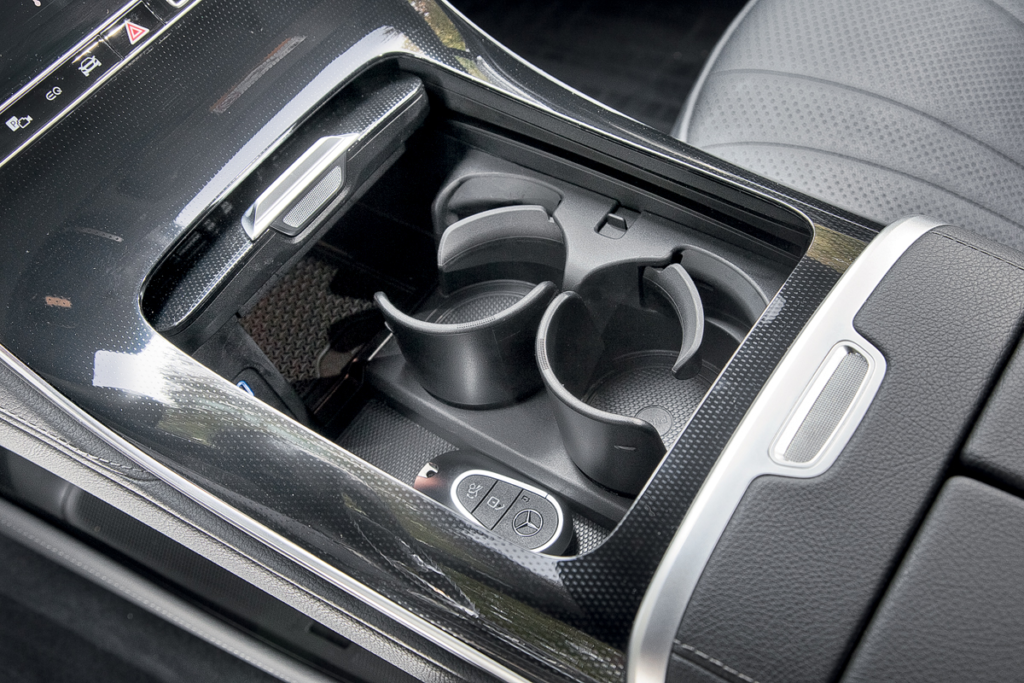
The compartment for small items and cup holders are hidden behind a glossy lid.
However, the EQE’s interior is primarily a car. Familiar, modern, and convenient. Excellent seating, understandable instruments, the best contemporary multimedia MBUX – we finally got to directly compare it with current Chinese systems. And Mercedes clearly wins this duel. It’s understandable that proprietary tabs and menus are not as important as third-party ones – such as navigation or music library. But both work better in the EQE. And the Yamaha audio system in the Zeekr noticeably falls short of the Mercedes’ Burmester speakers in terms of detail and dynamics.
But the Zeekr itself surely won’t fall short in terms of dynamics!
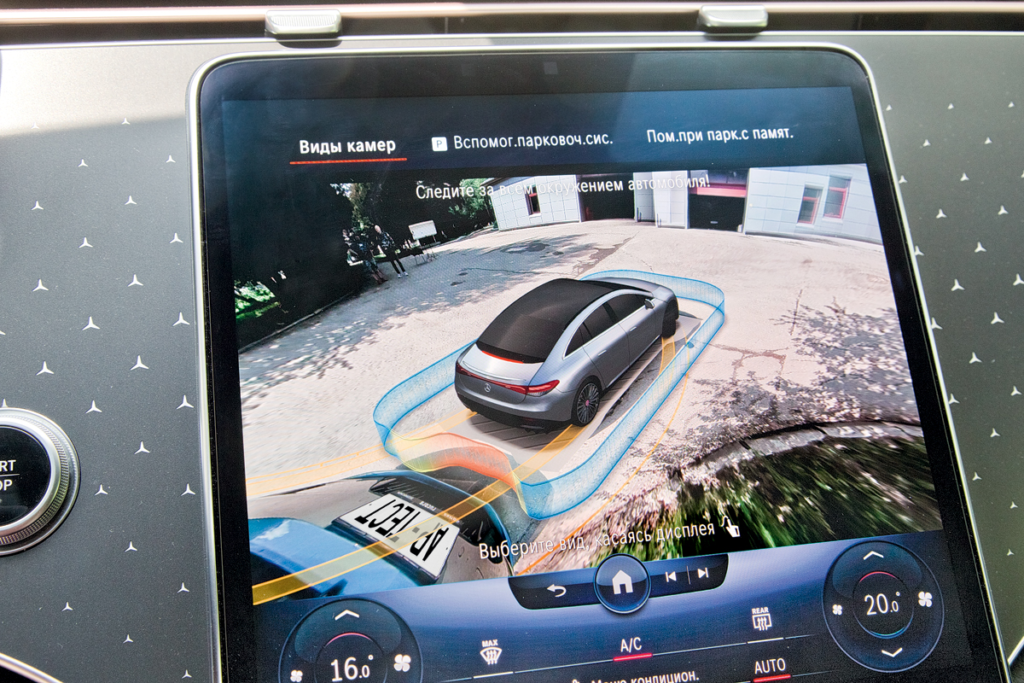
But hold on, you want to examine this electric car. You press on the door handle – and the door swings open by itself! However, the ceremony turns out to be a bit lengthy. If you stand too close or not at the right angle, the process will stop and then resume – I would have preferred to open the “gate” myself. But automatic closing after lifting the inner handle – that’s cool.
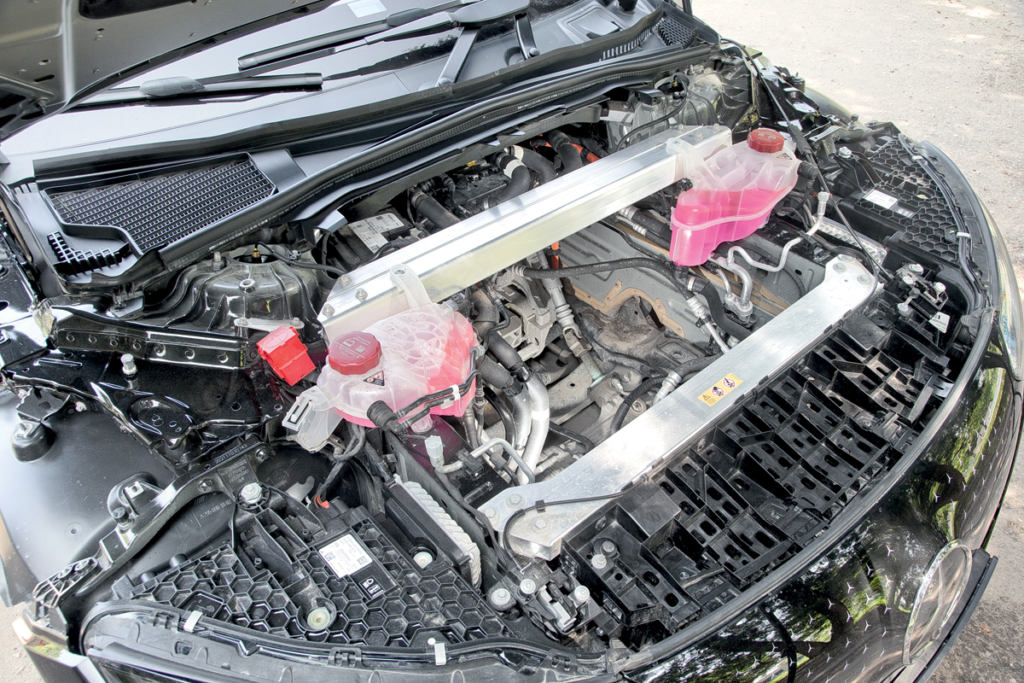
Inside, Zeekr impresses with the quality of materials – even from the photos, it is clear that the Mercedes has a simpler finish. However, on the EQE, for example, you can order a huge Hyperscreen that covers the entire front panel. But then the price would be much higher. And Alexey’s EQE now costs about the same as the Zeekr – around 88 000$.

And for equal money, the “Chinese” sells itself much more successfully. Alcantara, soft leather, a glass roof with adjustable transparency. This makes a serious impression on budding electric car minds. But the seat, although it looks like a sporty bucket, is set too high, and its profile is not successful. The tiny instrument screen is hard to read, and generally lowers the perception of the interior – as if they economized on you as the driver. Or is it a hint at autonomous driving capabilities?
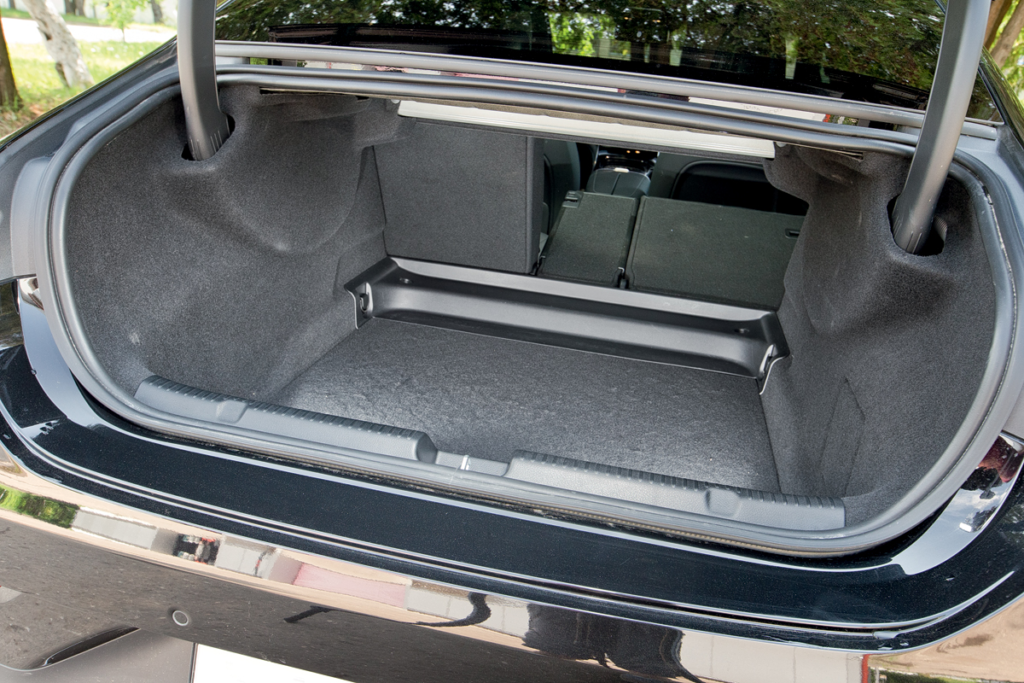
Mercedes is a fastback, so its trunk is of traditional sedan architecture. Spacious, but not with the same opening as Zeekr. Note that the hinges go under the trim.
After all, both electric cars are equipped with radars, surround cameras, and are trained to follow the leader even on quite winding roads. And you know, the Mercedes EQE is probably one of the first cases where I handed over the wheel and pedals to the car on a real road with some pleasure. Competent work with thrust and brakes, very confident movement in the center of the lane even in quite sharp turns – Mercedes doesn’t wait until the last moment when the wheel is already running over the lane marking, but immediately starts to gently deflect the steering wheel. And if usually, I undertake this experiment merely out of job necessity, then in the EQE, I traveled a decent stretch of a busy suburban highway without holding onto the wheel.
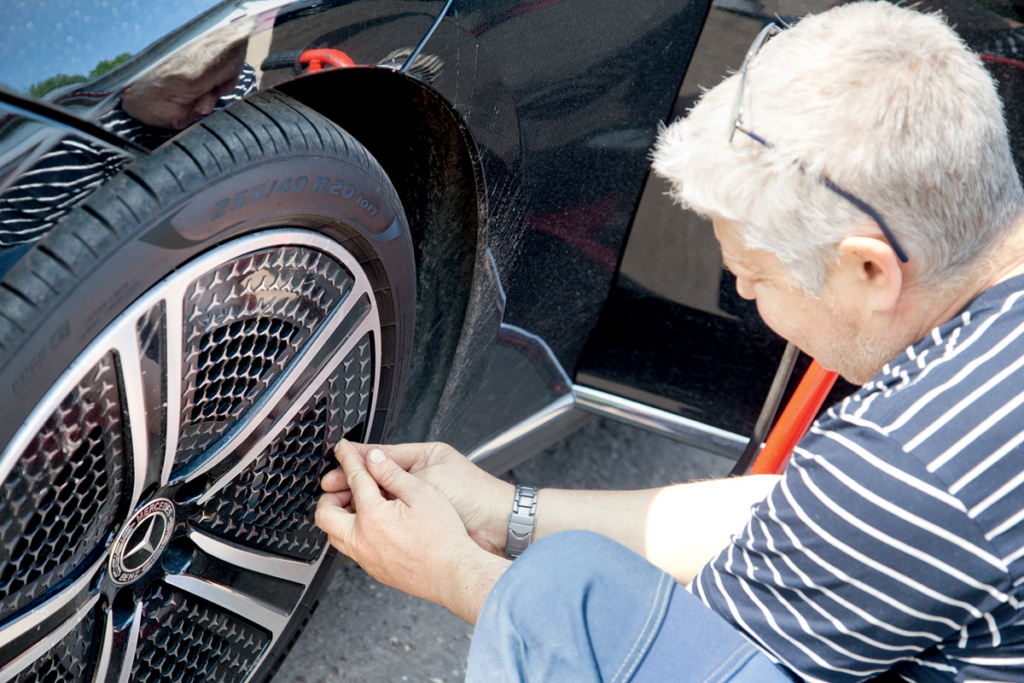
The aerodynamic hubcaps almost completely cover the Mercedes wheel – to unscrew the nipple cap, you have to struggle a bit.
And Zeekr, it seems, skipped autopilot lessons. The typical stupidity of responses for most active “cruises” – too sharp and delayed braking even at low speed. And alas, bobsled riding from one lane marking to another. Thankfully, they exist. And in the very first slightly sharper turn, “zero-zero-first” confidently went straight into the ditch without panic and warnings.

The fish-like design of the EQE is not impressive, but the correctly chosen background helps to improve perception – we thank the LINKS golf club for their assistance in conducting the shooting.
But I do not exclude that as the software is updated, the situation will improve – after all, like Tesla, Zeekr receives updates over the air, like a smartphone.

I must admit, I was confident in advance that I would witness another demonstration of the power of modern Chinese car industry and the avant-garde Zeekr would leave no stone unturned from the electric Mercedes. Or cell by cell. But…

Zeekr delighted with the classic shape and design of the steering wheel. The steering column, by the way, does not have a separate adjustment lever – like in Tesla. You need to go to the menu and operate with a touch remote on the right spoke.
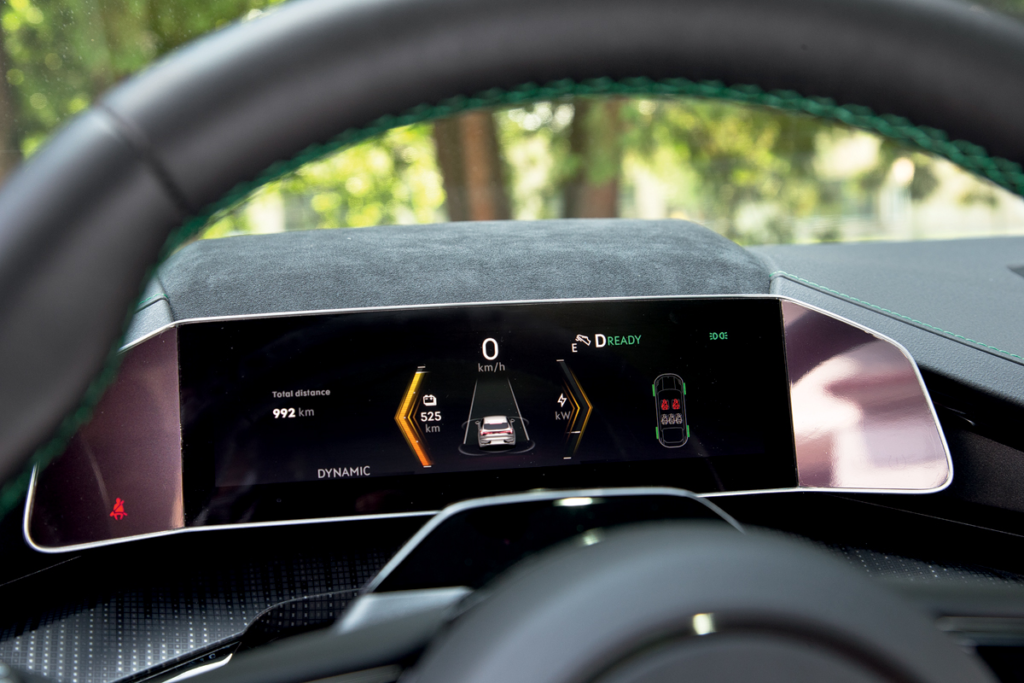
The small instrument screen is like from a modern motorcycle. It’s not very legible – you get the main information through a projector on the windshield.
The EQE is the best electric car I’ve driven! Yes, the Polestar 2 was more dynamic and sporty, but the overall balance of qualities in the fish-like Mercedes is higher. I still don’t know how the older EQS drives, but this more compact fastback captivates with its comfort level.
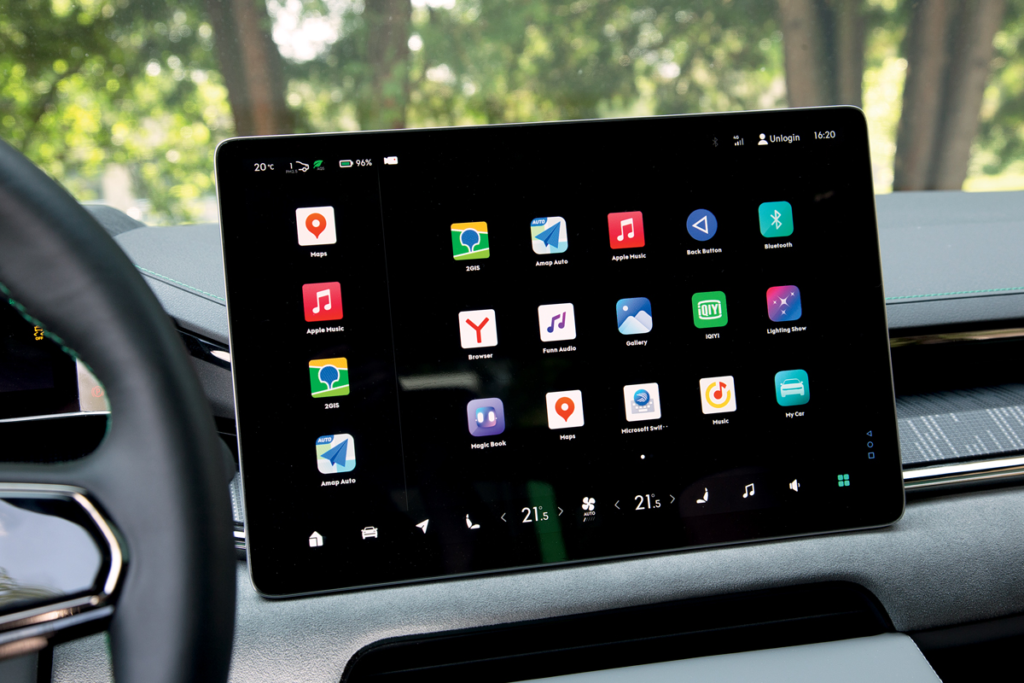
Zeekr’s multimedia system has only been partially translated from Chinese so far, but you quickly memorize all the necessary characters thanks to the logical menu. And the main thing is that there are no problems with installing third-party applications here.
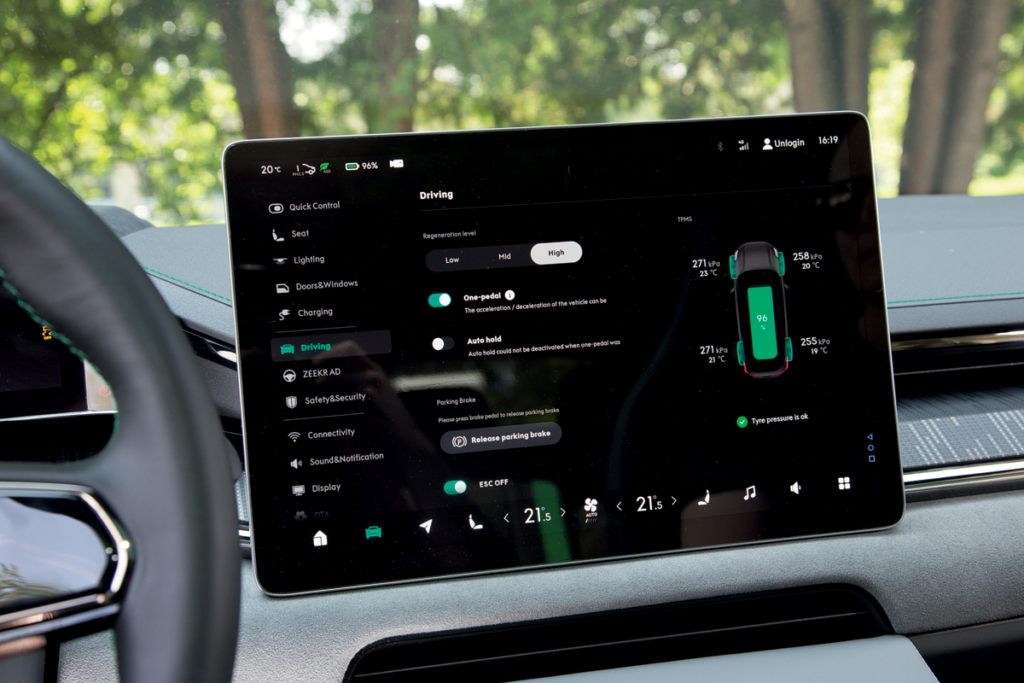
The same menu architecture was in the Li L9 hybrid and some BYD cars: a new Chinese standard. To call up important driving settings, just swipe the screen down, like on a smartphone.
It’s surprisingly quiet here all the way up to top speed, and the air suspension, having filled its full balloons of air, quickly and imperceptibly deals with everything that ends up under the wheels. Also, in uncleared yards, it will be useful to be able to increase the ground clearance from a modest standard 137 mm to 163 mm. For Zeekr, this is the basic level, and it can rise to a solid 206 mm. Finally, an electric car has appeared in which the noise level is just what it should be without an internal combustion engine – near zero. Let the EQE be far from handsome, but these shapes really work, there are no aerodynamic noises here at all.

Colored safety belts are a bright element of almost all Zeekrs. The seat looks great, but in reality, the profile of the backrest turned out to be problematic.

There is almost no individuality in the Zeekr’s cabin, but the quality does not decrease, even in small details – like in a good chain hotel.
Because of this, you often drive too fast: there are too few incoming sources of information. Therefore, a glance at the speedometer sometimes surprises – what, already 120? It’s funny how a high level of comfort can create additional work for the chassis in turns.
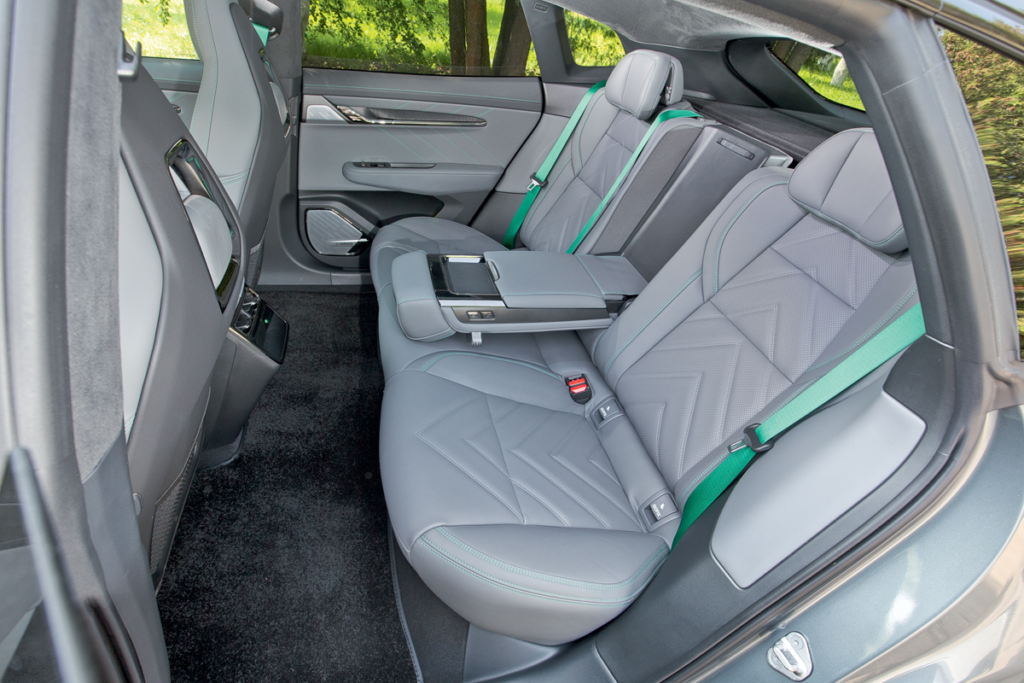

The hospitable Zeekr allows even tall people to sit comfortably. The backrests can be tilted, there is a separate microclimate zone. However, the high front seats almost completely block the front view, and the central armrest is tilted forward.
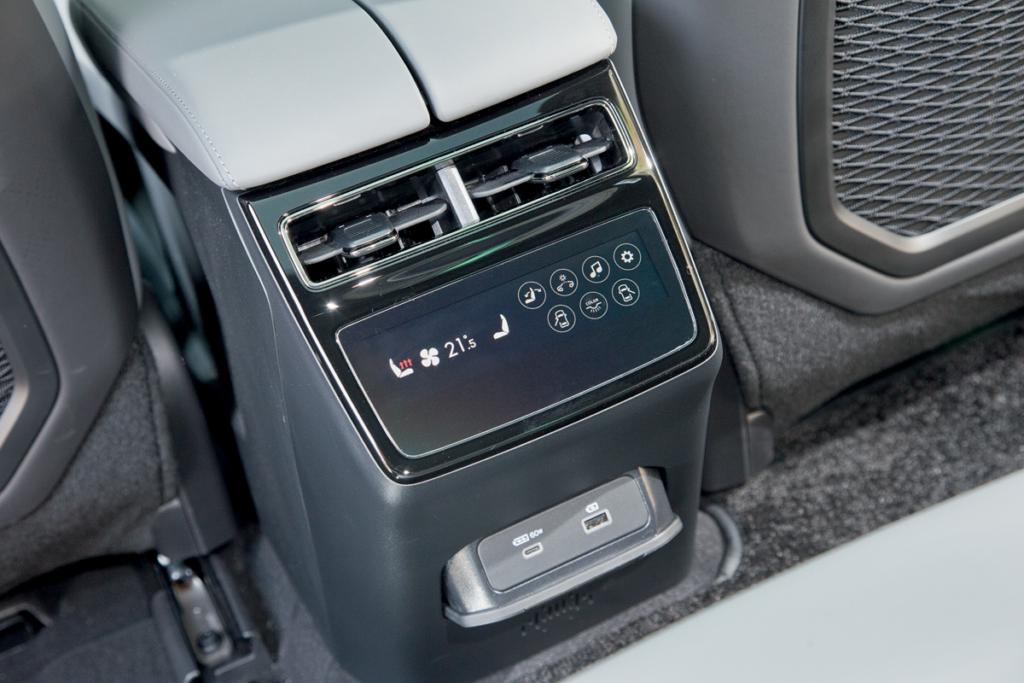
The third climate control zone is only unavailable in the initial We configuration.
And the EQE copes with it. The reactive action on the steering wheel is thick and seems to take us back to the times when Mercedes used a steering gear. But there was no such high pace of reactions in those years. In standard suspension mode, the body is excessively mobile when driving fast – it will sigh on a wave, it will sit down on a loaded wheel in a turn. The sports algorithm of shock absorbers brings everything back to normal, while you cannot say that the smoothness of the course noticeably suffers. When driving fast on country roads, it can be used by default. And if, lulled by the relaxed atmosphere of the EQE, you come to a turn too fast, then your smart watch will not mark a pulse spike here: Mercedes will briefly slide with its front wheels, effectively reducing speed, and return to the correct trajectory.
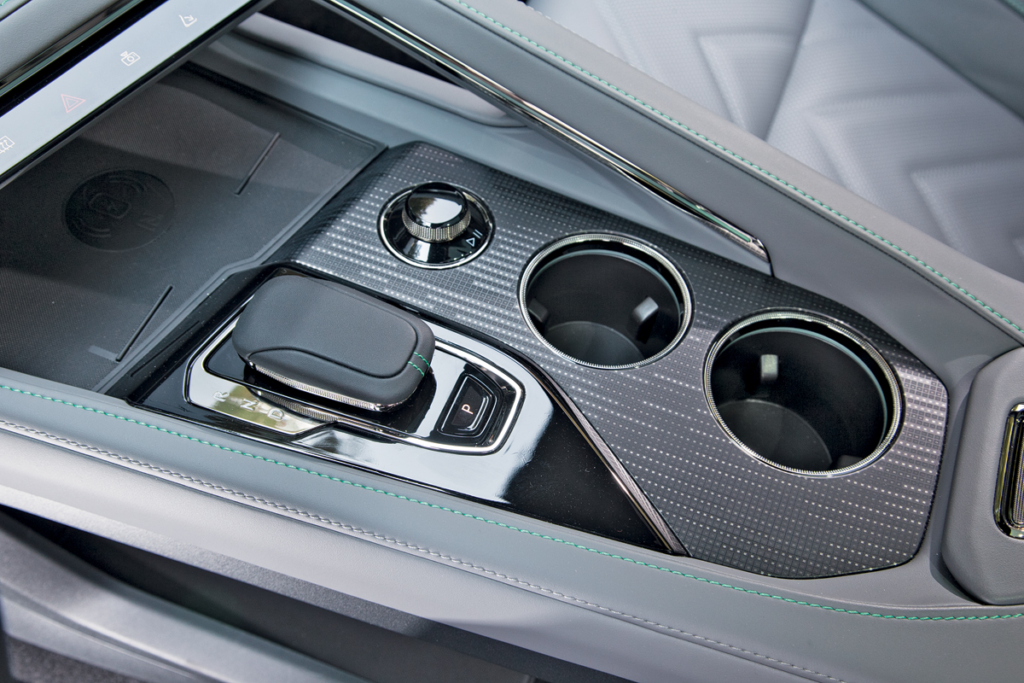
The Zeekr transmission joystick looks like a pebble from the beach – it fits perfectly in the hand and moves with pleasant effort.
Yes, there’s nothing to scold it for! Unless only for an uncomfortable back row. Everything is somehow un-Mercedes-like there: there is room for legs, but the cushion is low and hard, and the backrest is installed too vertically for some reason. Hey, with such a level of driving comfort, you want to semi-lie here, examining the kaleidoscope of tree crowns in the panoramic hatch.
But is Zeekr undoubtedly better in dynamics?

The electrochromic panoramic roof in Zeekr can change light transmission automatically or on command from the menu – from almost transparent to dark blue, as in the photo. In this mode, the glass retains 99.9% of ultraviolet radiation, and the sun protection factor SPF reaches 50. But non-original curtains are already being sold on the Chinese market.
Oh yes – rejoice, lovers of momentary simple pleasures! The current pedal is to the floor – and your lunch rushes back from the stomach. True, Zeekr did not show the declared 3.8 s, but just 4.1 s of unpleasant sensations – and already 100 km/h. And 200 on the speedometer will be just another ten seconds later, after which “Agent 001” will bump into the speed limiter.
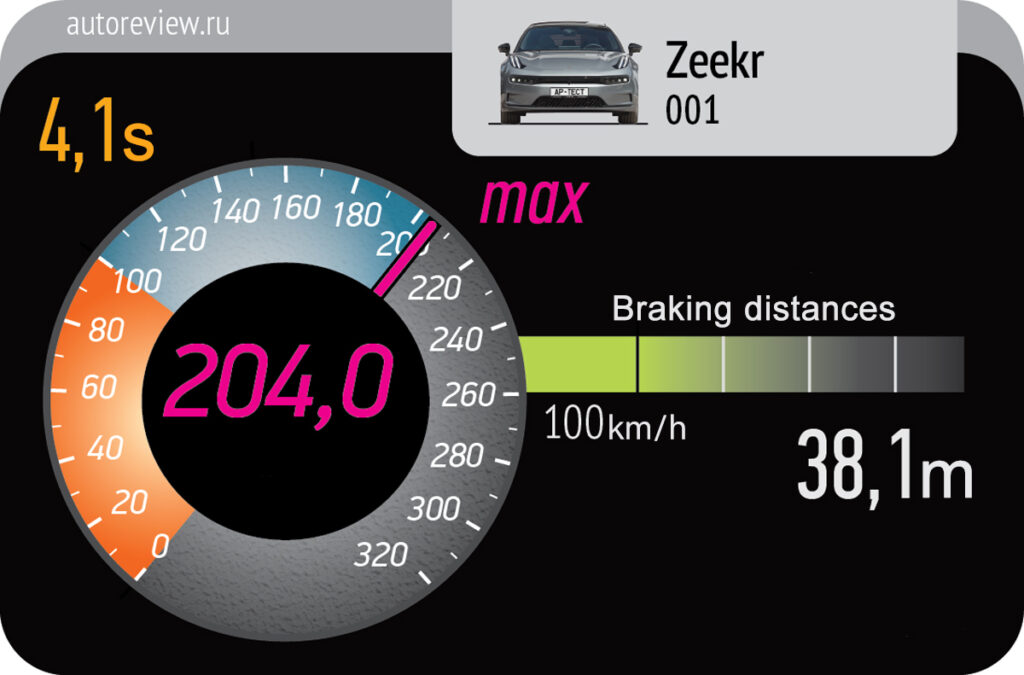
By the way, during these measurements, I finally realized what I dislike about such powerful electric cars – the feeling that I’ve become some kind of doll, a mannequin on tests. Like a puppet, I’m pushed into the backrest during acceleration, and my internal organs secrete anything but serotonin. Even in more dynamic ICE cars, this effect does not occur. There is sound, there is anticipation while the car is vibrating in launch control mode. Ultimately, the blows and jerks when changing gears. And here you’re just swaying under the howl of an electric motor.

Therefore, the EQE with its rather modest by today’s standards, but quite sufficient in real life, 6.3 seconds to “hundred” subjectively I like more – there is no feeling that you have become an involuntary participant in the experiment. After all, even in economy mode, the Zeekr still responds sharply to the throttle pedal, and the Mercedes does it linearly. And it has a cool realization of recuperation level control – with the help of paddle shifters. Flick the right one, as if raising the gear out of habit, and selected the free-rolling mode. Pressed the left one – and here is a fairly soft normal level, and another click will turn on more effective deceleration. But to drive with one pedal, as many electric cars can do, the EQE is not trained. I’ve already told you that it’s designed not to break conservative car habits.
| Car | Mercedes-Benz EQE 350+⠀ | ⠀Zeekr 001 |
| Max speed, km/h | 208 | 204 |
| Acceleration time, s 0—60 km/h 0—100 km/h 0—150 km/h | 3,0 6,3 13,4 | 2,3 4,1 7,7 |
| On 400 m distance | 14,1 | 11,8 |
| 60—100 km/h | 3,3 | 2,1 |
| 80—120 km/h | 4,3 | 2,6 |
| Braking distances at 100 km/h, m⠀⠀ | 35,1 | 38,1 |
Zeekr, on the contrary, is extremely distant from regular cars and is perfectly controlled by one pedal. However, the level of deceleration at the very beginning, when you have just released the right pedal at 60-80 km/h, in my opinion, is excessive and already reduces comfort of movement. Especially for passengers.
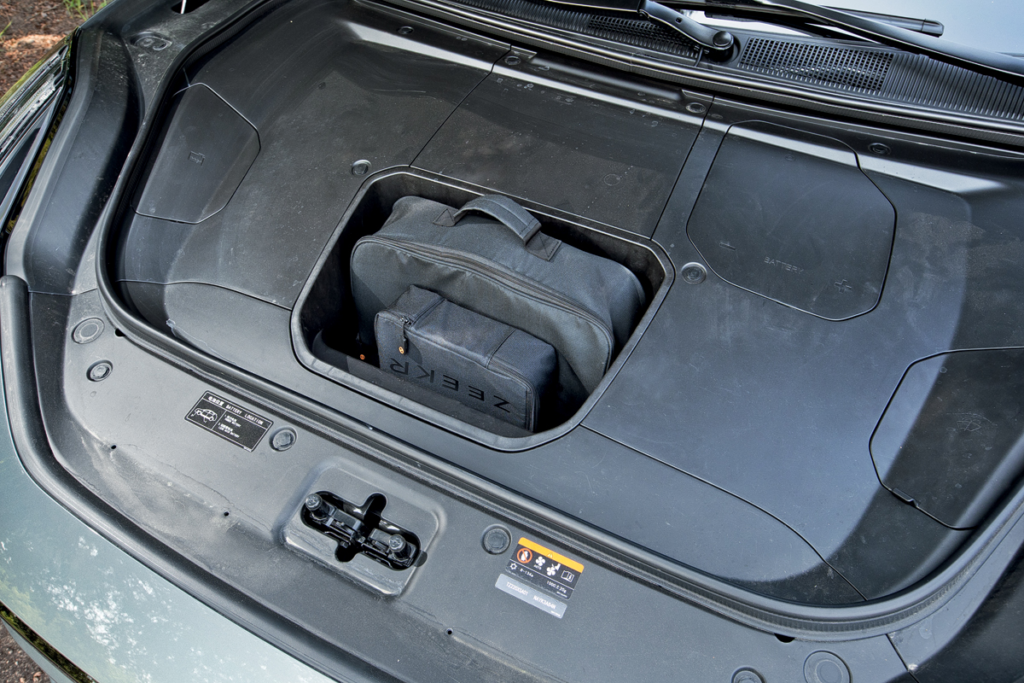
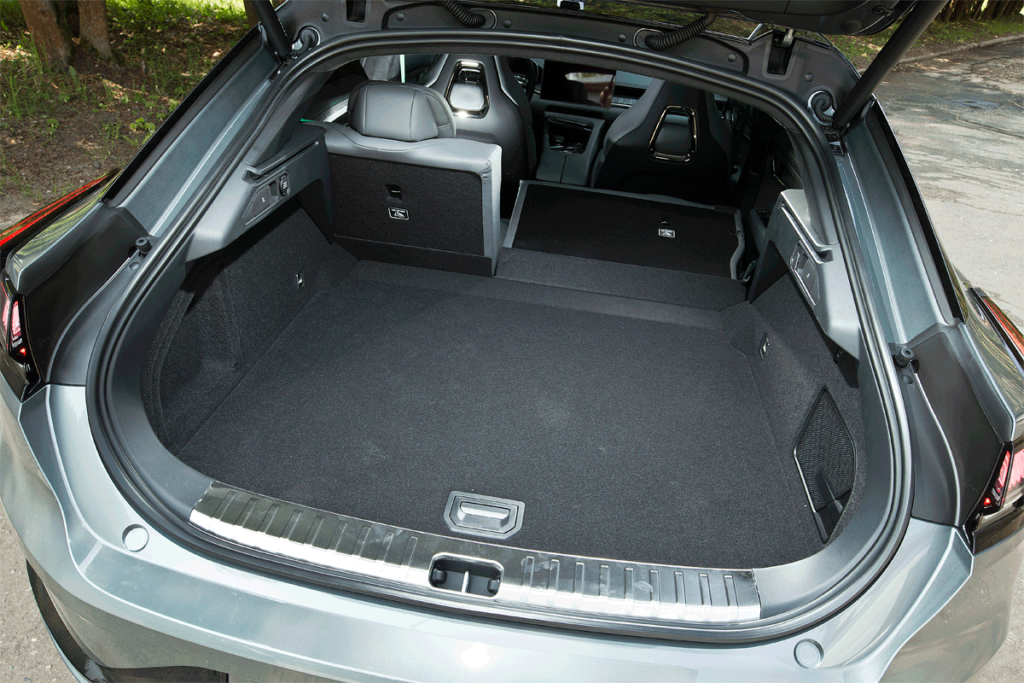
The front trunk, or frunk, so beloved by electric drivers, is nominal in Zeekr, but the main one at the back is very good: you can change the floor level, the finish is excellent.
Comfort is not Zeekr’s strong suit at all, and if the difference in acoustics with Mercedes is noticeable, but not dramatic, then in terms of ride smoothness, this liftback is first from the end. At least in this comparison. In the comfortable mode of the air suspension, it skillfully combines hard hits on the front suspension with a rocking stern. At the same time, handling is pretty bad. Here there’s tight and unnatural steering effort, and the sharpness of responses does not correspond to the angular stiffness of the suspension. As a result, there are problems with accuracy: Zeekr enters turns stepwise and in case of mistakes tends to skid, and the stability control system considers this a perfectly normal situation and does not interfere. If you “collect” the dampers in Sport mode, then ride smoothness will disappear completely, but pleasant handling won’t happen. Yes, Zeekr now wobbles less, but its manners do not provide driving joy. And how much heavier the steering becomes! Fortunately, in individual mode you can leave it lighter with a tightened suspension. By the way, Zeekr confirmed its unstable character on rearranging: it consistently entered the third corridor sideways, with the electronics intervening at the level of homeopathy. In our opinion, a reset is clearly required here.
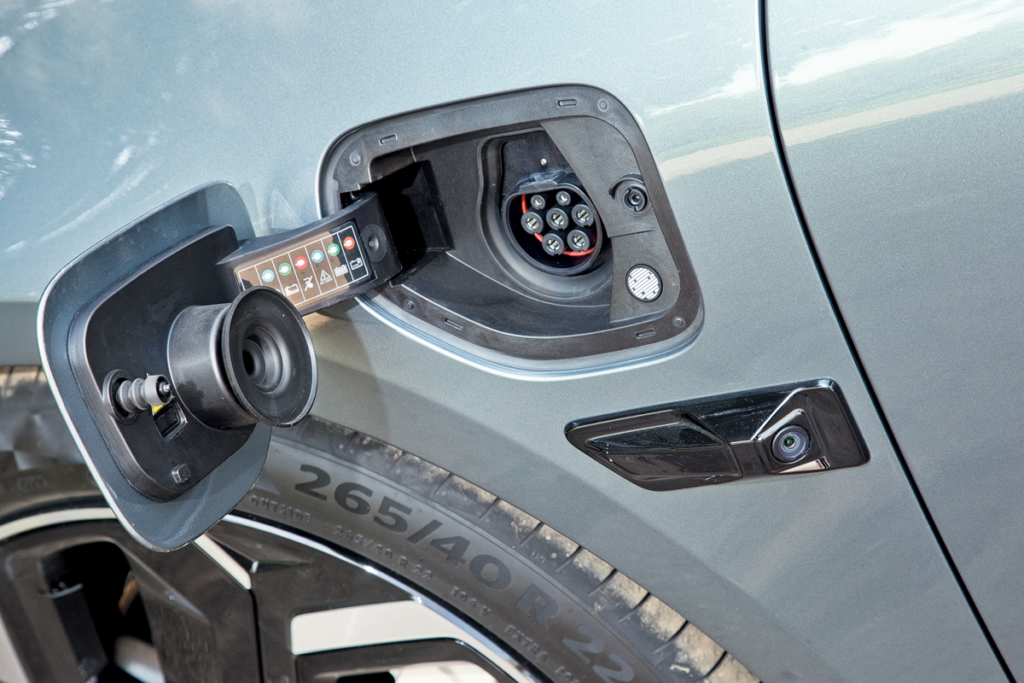
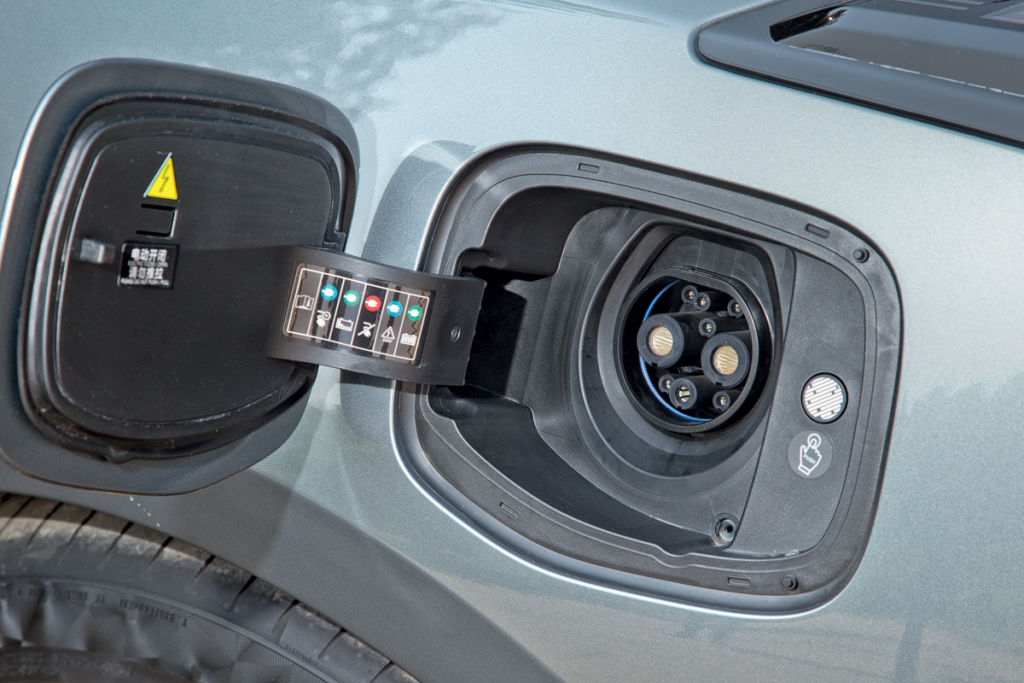
Charging sockets in electric vehicles are usually located in the front wings – like the gas tank neck on Porsche sports cars.
Indeed, for real buyers, this is not even a third-rate thing. The owner of this Zeekr, Ivan, traded in his BMW 550d for it and is pleased with everything – although he admits that the Chinese electric car falls short in terms of handling. But the design, quality of execution… The new format of mobility, in the end. Yes, modern batteries no longer make you constantly look at the remaining range. Perhaps this was the first electric vehicle test for me where we just drove as much as we wanted. And how we wanted.

With the exception of a wide gap between the trunk and the rear fenders, the Zikr’s bodywork is built to a very high standard.
Moreover, Alexei didn’t even bother to charge the Mercedes at the test site – he went through the entire program with us and headed to Moscow, where he “filled up” to the full. And the next day he went to Tambov with an average consumption of 15.8 kWh/100 km. With smart planning, you can even travel by electric car and perhaps the EQE is the first car without an ICE that I would happily use for daily city trips.

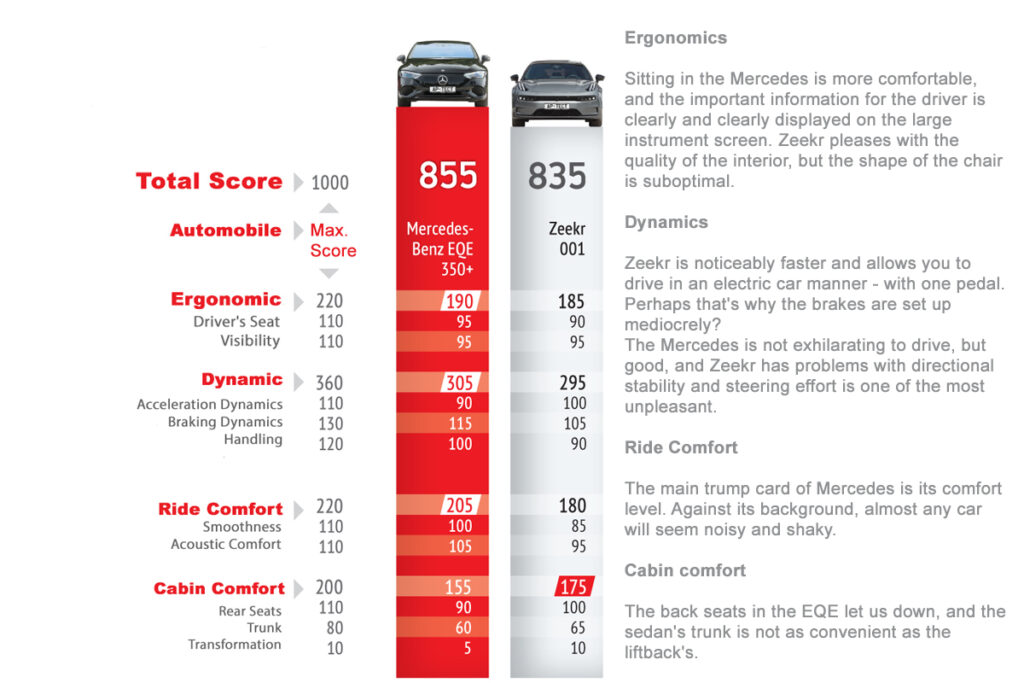
Emergency situations.
Yes, the Zeekr makes a stronger impression in static than the Mercedes, but the difference in feelings during emergency maneuvers is even greater.
The Mercedes’ swerve doesn’t seem particularly urgent. Up to 72 km/h, the EQE on Pirelli P Zero tires follows the trajectory without any skidding. Then, when returning to its lane, a small skid occurs – a red flag for the stabilization system. Anticipating its development, it starts to create drift, actively braking the outer front wheel. And at a speed of 79 km/h, it already becomes impossible to return from the oncoming lane.

It is opposed to Zeekr! But sideways and towards the ditch in a poorly controlled skid. The complete opposite of Mercedes: the skids that start at the same speed are not extinguished at all by the electronics here – we completely failed to notice any clear work of the stabilization system. The “zero-zero-first” simply slides sideways into the third corridor, and already in it, it is turned to the opposite angle of skidding. If the driver coped, then it’s good – Yaroslav managed to do it at a speed of 76.1 km/h.
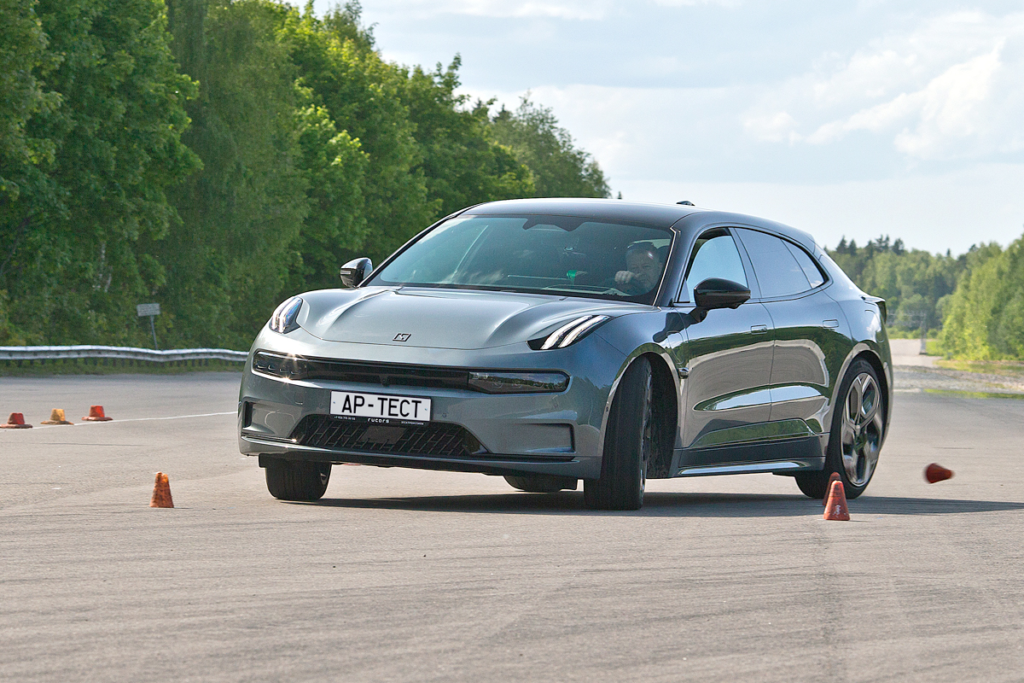
So behind the wheel of Zeekr it is much safer not to overtake, but to brake. However, the ABS works in a not very modern way, providing an average level of deceleration and a braking distance of 36 meters – while Mercedes was able to stop four meters earlier.
Moose test execution speed, km/h:
Mercedes-Benz EQE – 79,0
Zeekr 001 – 76,1

Dimensions, weight* and weight distribution along the axes

* Actual vehicle weight without driver
** Depending on the air suspension mode
Passport Data:
| Car | Mercedes-Benz EQE 350+ | Zeekr 001 |
| Mesurments, mm Length Width Height Wheelbase Track front/rear | 4946 1961 1512 3120 1633/1642 | 4970 1999 1560 3005 n.d.* |
| Trunk volume, l | 430 | 2144** |
| Curb weight, kg | 2310 | n.d. |
| Drag coefficient, Cd | 0,22 | 0,23 |
| Traction motor type | Synchronous, on permanent magnets | Synchronous, on permanent magnets |
| Traction motor location | Transversely over the rear axle | Over the front and rear axles |
| Max. power, hp/kW | 292/215 | 544/400 |
| Max. torque, Nm | 565 | 768 |
| Traction battery type | Lithium-ion with a capacity of 100 kWh⠀ | ⠀Lithium-ion with a capacity of 100 kWh |
| Battery voltage, V | 328 | 407 |
| Drive unit | Rear | All-wheel drive, with individual electric motor on each axle |
| Front suspension | Independent, pneumatic, four-lever | Independent, pneumatic, on double wishbones |
| Rear suspension | Independent, pneumatic, multi-link | Independent, pneumatic, multi-link |
| Max speed, km/h | 210*** | 205*** |
| Acceleration time 0—100 km/h, s⠀ | 6,4 | 3,8 |
| WLTP/CLTC cycle reserve | 624/— | —/606 |
| Maximum DC charging power, kW⠀ | 173 | 360 |
*n.d. — no data
** To the ceiling, with the rear seats folded down
*** Limited by electronics
Photo by Dmitry Pitersky
This is a translation. You can read an original article here: Электромобили Zeekr 001 и Mercedes-Benz EQE: море волнуется

Published August 16, 2023 • 17m to read


